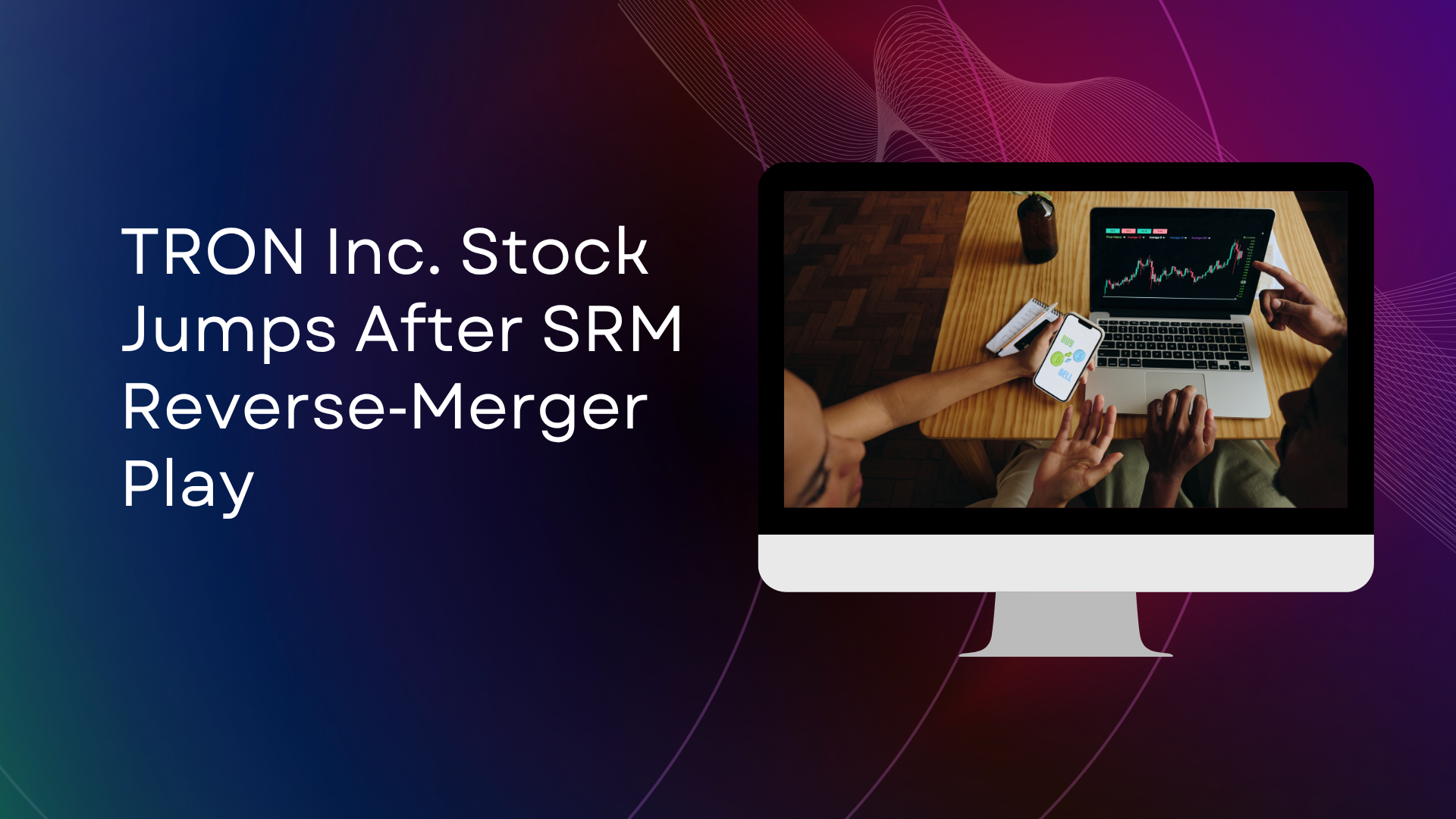
Today TRON Inc. has filed a $1 billion mixed shelf registration with the U.S. Securities and Exchange Commission, paving the way for future issuances of equity, debt, warrants and other securities as the company seeks to grow its holdings of tron (TRX). The filing marks the first major capital‑markets step since the firm’s June reverse merger and rebrand from SRM Entertainment to TRON Inc., a pivot that transformed a small toy company into a publicly traded “crypto‑treasury” vehicle tied to the Tron blockchain.
What’s in the filing
According to the company’s SEC page, TRON Inc. submitted a Form S‑3 shelf registration dated July 28, 2025. A shelf lets an issuer tap the market over time as conditions allow, rather than selling all securities at once. Reporting by The Block and other market outlets says proceeds are intended to build a larger TRX reserve on the company’s balance sheet.
The strategy mirrors a broader 2025 trend in which listed firms are raising capital to buy crypto assets for corporate treasuries, though TRON Inc. is unusual in that it focuses on its ecosystem’s native token rather than bitcoin.
How we got here: the SRM reverse merger
In mid‑June, SRM Entertainment announced a deal to purchase Tron tokens, rebrand as TRON Inc., and bring Tron’s founder Justin Sun on as an adviser. Reuters reported the structure as a reverse merger, enabling the crypto project to gain a U.S. listing via SRM’s Nasdaq slot. The corporate name and ticker subsequently changed to TRON (NASDAQ: TRON), and the company rang the Nasdaq opening bell on July 24.
Market reaction
Coverage from Cointelegraph and Yahoo Finance indicated the stock rallied after the shelf news, extending gains that began around the rebrand and bell‑ringing. Intraday spikes of 20%+ were noted in some reports, while volumes surged as traders framed TRON Inc. as a high‑beta “crypto‑treasury” proxy.
On the token side, TRX’s immediate move was muted to slightly negative, a typical reaction when equity issuance implies potential dilution at the corporate level, even if proceeds are earmarked for token purchases. Some market trackers cited a small intraday dip as traders weighed near‑term flows against the longer‑term accumulation plan.
Why it matters
- A new model for public crypto exposure:
The Wall Street Journal and others have chronicled a summer wave of companies raising capital to buy crypto. TRON Inc. adds a twist: a public vehicle explicitly focused on TRX accumulation, not just BTC. If executed, the program could create a steady, price‑insensitive buyer on the bid. - Liquidity and governance questions:
A billion‑dollar shelf does not mean an immediate billion‑dollar purchase. Management can issue in tranches, and investors will watch disclosure around timing, pricing, custody and any hedging policies for the TRX reserve. The Block notes the TRX‑treasury framing alongside the post‑merger structure as key for how the market will value the equity. - Regulatory optics:
Reuters flagged the U.S. listing via reverse merger and advisory links to Justin Sun, who has drawn regulatory scrutiny in prior years. While the current filing is a standard capital‑markets step, governance and compliance signals will remain in focus as the program unfolds.
Key details we know so far
- Form: S‑3 shelf registration permitting up to $1 billion of securities over time.
- Stated intent (per media reports): expand TRX holdings as a core corporate asset.
- Corporate history: rebrand from SRM Entertainment → TRON Inc.; Nasdaq ticker TRON effective mid‑July.
- Listing milestone: Nasdaq opening bell on July 24, 2025.
What to watch next
- Prospectus supplements
The shelf provides flexibility; investors will look for supplements that specify size, instrument, and use of proceeds for each takedown. Those documents will clarify how quickly TRON Inc. intends to buy additional TRX and through which venues or custody partners. - Treasury disclosures
Markets will seek periodic updates on the number of TRX held, cost basis, and any risk‑management policies (e.g., concentration limits, lending, or staking, if applicable). Media tallies have referenced existing TRX reserves; future filings should formalize these figures. - Price‑flow dynamics
If issuance begins, the equity could face dilution while the token sees incremental demand; how that balance nets out will depend on the pace of fundraising and deployment, as well as underlying TRX liquidity. Early token reaction suggests traders are in “show me” mode. - Regulatory communication
Given the novelty of a U.S.‑listed company focused on a non‑bitcoin crypto reserve, clear compliance and governance updates will be vital to investor confidence. Reuters’ earlier coverage underscores the spotlight that accompanies this structure.
Bottom line
TRON Inc.’s $1B shelf registration formalizes its plan to act as a public‑market TRX treasury after the SRM reverse merger and rebrand. The move slots into 2025’s broader “corporate crypto” wave, but it’s rarer to see a listed vehicle train its balance sheet on an ecosystem token rather than bitcoin. With the mechanism now in place, the next stage is execution: how much capital the company actually raises, how fast it converts proceeds into TRX, and how transparently it reports holdings and risk controls. For equity and token holders alike, those updates will determine whether this headline turns into sustained demand—or remains a summer rally story.